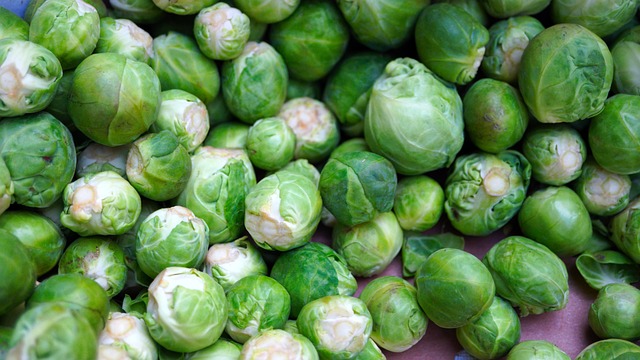Fibre-rich foods generally have a low glycemic index (GI), although not all foods with a low GI necessarily have high fibre content.
Eating meals with the right amount of low glycemic index carbohydrate, i.e. the right glycemic load, lowers inflammatory markers and helps you fell fuller longer.
According to Harvard researchers, healthy, middle-aged women who ate the meals with the lowest glycemic load had the lowest levels of C-reactive protein, a marker of inflammation in the body.
In overweight women who had greater levels of C-reactive protein to begin with, eating higher amounts of low glycemic index foods had an even greater impact on their inflammatory markers.
Glycemic Index and Inflammation
Insulin resistance means glucose is not effectively cleared from the blood after eating. This extra glucose in the bloodstream causes inflammation.
High-GI diet appears to increase insulin resistance after a meal. British researchers compared the effects of a high-fat diet, a low-GI diet, a high-GI diet and a high sucrose (table sugar) diet on insulin resistance in middle-aged men with heart disease risk factors. Despite containing the same number of calories, the high-GI diet caused greater fluctuations in blood sugar and insulin levels.
In a recent study published in the American Journal of Clinical Nutrition, Harvard researchers found that eating more high-GI foods significantly increases the amount of high-sensitivity C-reactive protein (CRP) in healthy middle-aged women – regardless of whether they have other risk factors for heart disease.
Inflammation in Heart Disease
In the same Harvard study, researchers explain that high-GI carbs may boost heart disease risk by exacerbating of pro-inflammatory processes like insulin resistance. Insulin resistance means glucose from food is not effective cleared but lingers in the blood stream triggering inflammation. Eating lots of rapidly digested and absorbed high-GI carbohydrates increases the risk of heart disease, particularly in overweight women who are already prone to insulin resistance.
According to research in the May 2009 issue of the American Journal of Clinical Nutrition, long-term intake of grains with different glycemic indexes may affect the extent of inflammation in people with the heart disease risk factors. For example, researchers from Finland found that the glycemic response to the rye bread and pasta are lower than that of oat and wheat bread and potato – with the harmful effects of high blood sugar sticking around in the body for more than two hours. The people involved in this study had metabolic syndrome, which means they were already at higher risk of developing heart disease and other inflammatory conditions.
Researchers from Tufts New England Medical Center found greater declines in CRP concentration after consumption of a low glycemic load diets in overweight people. In this study, published in the journal Obesity, 34 overweight people were given calorie-restricted diet that had either a high glycemic load or a low glycemic load. Weight loss aside, the people who ate the low glycemic load diet saw a drop in levels of inflammation in their body.
Numerous studies have shown that overweight adults on low-GI diets have lower levels of CRP and lower blood levels of bad LDL cholesterol than their overweight peers who eat high-GI diets – even if they didn’t lose weight on the low-GI diet.
Inflammation in Type 2 Diabetes
Another study from Harvard showed that diets high in low-GI whole grains and portion-controlled carbohydrates may have a protective effect against systemic inflammation in diabetic patients. Portion control of carbohydrates – even low-GI carbs – means you’re eating the controlling your glycemic load.
In this 2007 report, long-term, epidemiological studies were reviewed to reach the conclusion that low-GI diets reduce oxidative stress and guard against system-wide inflammation that may mark the beginnings of type 2 diabetes.
Glycemic Response and Colonic Health
The strength of your gut, as determined by your rate of colonic fermentation, plays a role in the rise and fall of blood sugar levels after eating high-GI foods. In comparing a high-GI meal to a low-GI meal, Swedish researchers found that rates of colonic fermentation (a sign of a healthy gut) dropped as blood sugar levels peaked.
In this study, 15 healthy people ate evening meals with varying amounts of non-digestible fibre (the kind found in wheat bran). At breakfast, those who ate more non-digestible, low-GI carbs reported increased feelings of fullness and showed higher rates of colon fermentation.
What are low-GI foods?
Veggies:
Asparagus, avocado, beet greens, bell peppers, bok choy, broccoli, brussel sprouts, cabbage, cauliflower, celery, cucumber, fennel, green beans, kale, crimini mushrooms, mustard greens, olives and olive oil, romaine, spinach, summer squash, tomatoes, yams.
Fruits:
Apples, blueberries, cranberries, cherries, grapes, grapefruit, kiwi, oranges, peaches, pears, plums, prunes, raspberries, strawberries.
Grains, breads, nuts and seeds:
Oat bran, rolled oats, pumpernickel, sourdough, brown rice, buckwheat, flaxseeds, sesame seeds, almonds, cashews, peanuts, pumpkin seeds, sunflower seeds, walnuts.
Beans and legumes:
Lentils, pinto beans, navy beans, kidney beans, chick peas (garbanzo), black eyed peas, yellow split peas.
Try some new, low-GI foods today and let me know what you think? Oh, and remember to drink lots of water between meals if you’re new at introducing these foods.
As always, connect with me if you have any questions about nutrition, health, wellness, exercise, etc.
In good health,
Cheryl



